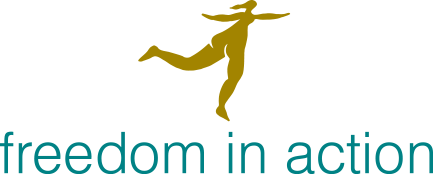
What Are the Hands For in Teaching the AT?
In teaching the Alexander Technique, the hands are for communication. Effective communication using the hands means a flow of information in both directions: via the hands to the teacher about the pupil and via the hands to the pupil from the teacher.
Hands Can Convey Inhibition.
The hands can convey calm and quiet in a general way; skilled use of the hands is invaluable in helping the pupil to settle and feel safe. The more that the teacher has embodied a quality of deep, awake yet non-reactive quiet, i.e. Inhibition, the more the teacher’s hands can convey this and the more the pupil has the opportunity of recognizing that quality as a possibility for themselves. The hands convey the quality of the teacher’s lived “Inhibition’.
Roughly, the hands intervene between the pupil’s brain and muscles to quieten the habitual messages, i.e. to support Inhibition, which allows for the possibility of something else to happen, which is where ‘Direction’ might come in. More precisely, the hands talk to the pupil’s whole nervous system, including the brain, asking for ‘quiet’, which may then allow ‘Direction’ to be cultivated.
Hands Gather Information
1. The hands can inform the teacher of both the conditions and manner of use of the pupil – where the pupil may be holding or pulling themselves down or restricting their breathing. I recall a particular lesson early in my AT life. My teacher, Tessa Cawdron’s, hands were touching my neck and head. She pointed out to me that I was stiffening my ankles. She was of course right, and I was stunned. It seemed very mysterious to me then, but is perfectly clear now. A well-trained teacher’s hands can instantly bring the teacher a wealth of information, including information about parts other than the ones the hands are touching. This is because of the relationships between all the parts: eg if the knees are locked, a pattern of adjustments that is entirely characteristic of locked knees is triggered, in order for the maintenance of balance. Thus, the pupil is not just locking the knees, but also tightening in their lower back, restricting their rib movement and creating a downward pull all the way up to the head, all linked back to the knees. It is an interdependent pattern.
2. The hands can tell the teacher if the pupil is daydreaming/drifting, or at the other extreme, overdoing, ie the hands can convey something about the quality of the pupil’s Inhibition and Direction.
3. If hands listen without an intention to ‘do’ anything, it may become clear in what order the pupil needs to unravel the mutually dependent elements of unnecessary holding, in order to interfere with their Primary Control less.
4. Then ‘Direction’ can begin to have relevance. Effective Direction comes out of effective Inhibition. When the teacher’s hands can convey adequate ‘quiet’ and the pupil follows this cue, then something else starts to become available. This is direction: a coherent quality of aliveness, or springy elasticity. ‘Direction’ as I believe FM may have meant it, needs to have an energetic flow to it, a fluency, which is malleable and definitely not stiff. It is an imaginative process which may involve something like visualization, and includes a dynamic ‘relationing’ in the body (sometimes called oppositions or antagonistic pulls), connecting (‘directing’) an energetic intent that includes an aspect of ‘body’, yet without attachment to ‘body’; inhabiting ‘body’ with detached intent and awakeness. All of this can be conveyed and supported with the hands.
5. Supporting functions of the hands include helping a pupil to learn to observe sensation in a detached way, i.e. without going ‘into’ it (‘feeling’), as well as helping with immediate feedback re too much ‘doing’ or not enough ‘current’ in the direction, i.e. about the effectiveness of the pupil’s Inhibition and Direction. The hands can confirm to the teacher that the pupil is getting the desired message, or not: ‘no, not that, but this’. They can hint to the teacher what might usefully be conveyed to the pupil verbally to help clarify the pupil’s thinking/internal pictures/concepts to help the pupil towards more simplicity, integration, coherence or agency in their use.
The hands can also clarify what is meant by the words used – helping to bring a precise meaning to words like ‘neck free’ or any other words or phrases that the teacher uses, thus helping the pupil to build their own conceptual framework upon which to hang their experiences.
The ability of teachers to use their hands effectively is not in any way distinct from their overall use. The hands are an expression of the teacher’s ability to Inhibit and Direct; to generate a coordinated elasticity through themselves which is recognized as a well-ordered Primary Control. I don’t know if the same thing is meant when some refer to ‘co-ordinating’ themselves. In my limited experience, however, they usually don’t mean the same as I mean. How well hands work is entirely dependent upon what the hands are an extension of, and how well-coordinated that is. In other words, it’s the Use of Yourself, not the use of your hands! (“Why, Mr. Binkley, when I am teaching you, as I do now, I am able to convey to you what I want to convey, because as I touch you, and guide you with my hands in carrying out my instructions, I, myself, am going up! up! up!” FMA, quoted in G. Binkley, The Expanding Self, pg 51.)

Recent Comments